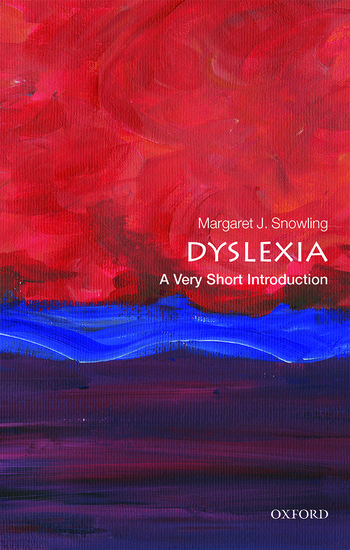Home >
A Very Short Introduction >
Dyslexia | ディスレクシア(読字障害) (Language Arts & Disciplines)
A Very Short Introduction | Language Arts & Disciplines
Dyslexia | ディスレクシア(読字障害)
ISBN: 9780198818304
Series: A Very Short Introduction
Dyslexia | ディスレクシア(読字障害) (Language Arts & Disciplines)
A Very Short Introduction Dyslexia | ディスレクシア(読字障害) (Language Arts & Disciplines) メディア > 書籍 > ノンフィクション > 言語学習書 Expect Delays of Up to 4 Weeks| ご注文はこちら |
ISBN
9780198818304 (旧規格ISBN: 0198818300)
- 説明
- シリーズの説明
- 目次
ディスレクシア(読字障害)は交差言語的研究において複数の言語で確認されている学習障害の一種です。19世紀末に報告されて以来、その定義や診断のプロセスには多くの議論がありましたが、本書ではこの障害を抱える人の声も交え、ディスレクシアについて概括します。遺伝的側面や環境要素などの潜在的原因について検討し、一般の人と脳での情報処理の仕方がどう異なるのかを理解するのに用いられた、さまざまな脳のスキャニング法について説明します。そして今日行われている支援や訓練について言及します。
難解なテーマを分かりやすく解説する入門書シリーズ
Very Short Introductions (VSI) シリーズは、1995年に Mary Beard 著『Classics』の刊行をもって創刊し、以来、歴史や政治、宗教、哲学、科学、時事問題、ビジネス、経済、芸術、文化など、様々な分野のテーマを取り上げてきました。発行点数も数多く、現在までに680タイトル以上を刊行しています。
本シリーズは、世界各国の評論家からの評価も高く、知識欲の強い読者の間では定番の入門書として定着しつつあります。販売部数は全世界で1,000万部を超え、53ヶ国語の言語に翻訳されています。
専門家による分析や新しい見解を盛り込みながら、イスラム教からポスト構造主義、宇宙論まで、難解なテーマを平易に説く、刺激に満ちた Very Short Introductions は、初学者にとって最適の入門書であり、予備知識のある読者には新たな視点を提供します。一般の方や大学生、大学院生に愛読されているほか、大学の授業にも採用されるなど、幅広くご活用いただいています。
注意:このシリーズはELT教材に該当しないため割引対象外です。
Preface
1: Does dyslexia exist?
2: What is dyslexia?
3: What role do genetic and environmental factors play in developing dyslexia?
4: What causes dyslexia
5: What do we know about the dyslexic brain?
6: What works for dyslexia?
7: Conclusions
Further reading
Index
ディスレクシア(読字障害)は交差言語的研究において複数の言語で確認されている学習障害の一種です。19世紀末に報告されて以来、その定義や診断のプロセスには多くの議論がありましたが、本書ではこの障害を抱える人の声も交え、ディスレクシアについて概括します。遺伝的側面や環境要素などの潜在的原因について検討し、一般の人と脳での情報処理の仕方がどう異なるのかを理解するのに用いられた、さまざまな脳のスキャニング法について説明します。そして今日行われている支援や訓練について言及します。
シリーズの説明
難解なテーマを分かりやすく解説する入門書シリーズ
Very Short Introductions (VSI) シリーズは、1995年に Mary Beard 著『Classics』の刊行をもって創刊し、以来、歴史や政治、宗教、哲学、科学、時事問題、ビジネス、経済、芸術、文化など、様々な分野のテーマを取り上げてきました。発行点数も数多く、現在までに680タイトル以上を刊行しています。
本シリーズは、世界各国の評論家からの評価も高く、知識欲の強い読者の間では定番の入門書として定着しつつあります。販売部数は全世界で1,000万部を超え、53ヶ国語の言語に翻訳されています。
専門家による分析や新しい見解を盛り込みながら、イスラム教からポスト構造主義、宇宙論まで、難解なテーマを平易に説く、刺激に満ちた Very Short Introductions は、初学者にとって最適の入門書であり、予備知識のある読者には新たな視点を提供します。一般の方や大学生、大学院生に愛読されているほか、大学の授業にも採用されるなど、幅広くご活用いただいています。
注意:このシリーズはELT教材に該当しないため割引対象外です。
EASY ORDER FORM
表示価格が税込価格
価格(税抜):
1,790 円


